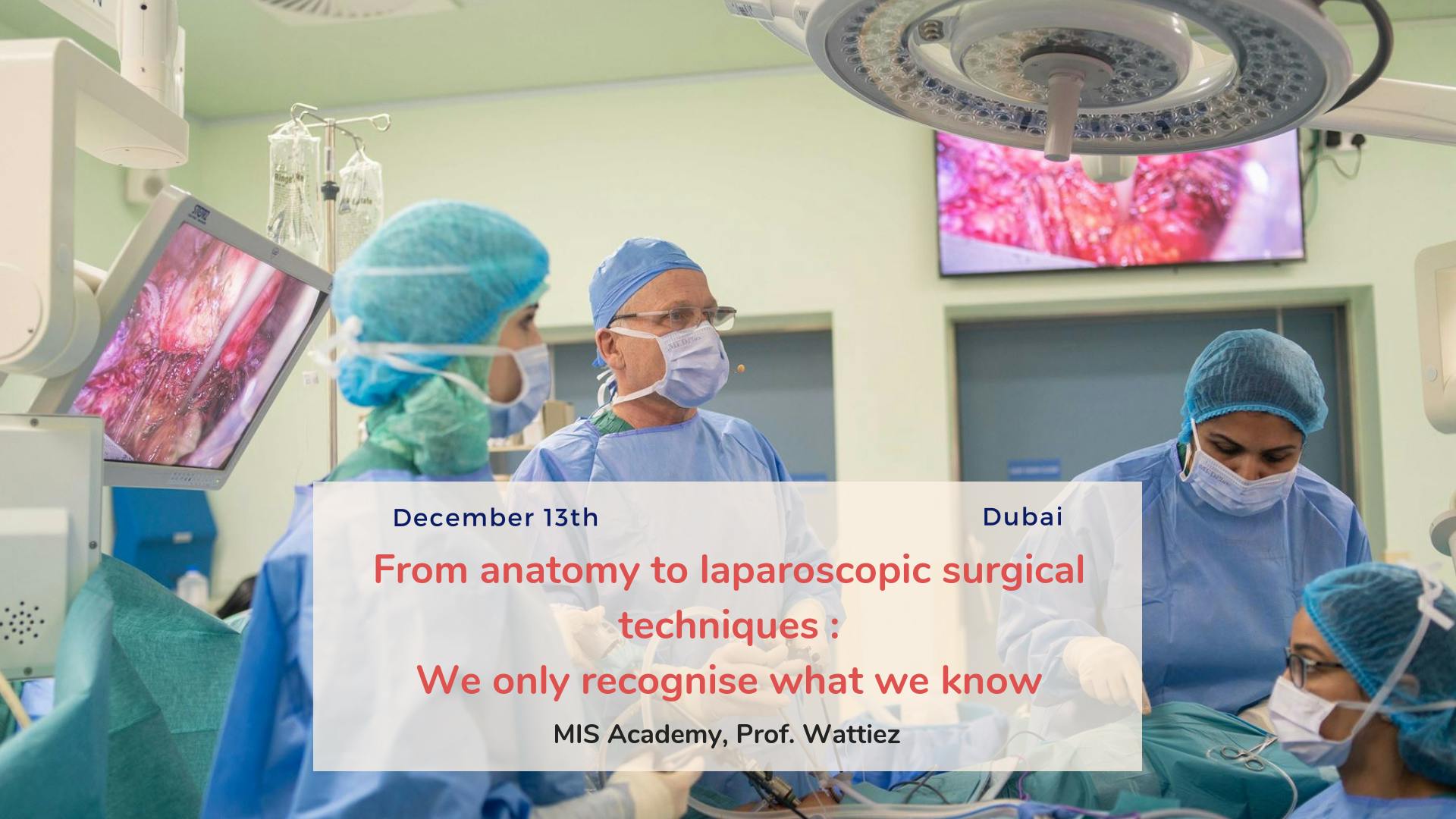INVIVOX: What was your motivation for this training?
Prof Arnaud WATTIEZ: Endoscopic surgical techniques are evolving rapidly, increasing training needs. The cameras make it possible to see surgical sites very precisely and to discover numerous anatomical details that were until then little or not visible by other means. Knowledge of anatomy evolves towards more and more precision, which allows us to widen the field of indications towards complex pathologies thanks to these endoscopic ways. It becomes imperative to know the anatomy perfectly to cope with some difficult operating conditions.
INVIVOX: How is it important for gynaecological surgeons to come back to these notions of anatomy due to new techniques?
Prof A. W.: Surgeons now intervene in anatomical areas where they rarely used to go. Today, surgery has become functional hence the need to know the pelvic innervation perfectly which gynaecologist surgeons knew little about. Endoscopy brings changes in areas that require to consolidate one's knowledge of anatomy. When we migrate to new technologies or new materials, we need to adapt our techniques otherwise there is no added value to using this innovation. Previously, we treated a prolapse by attaching a prosthesis on the promontory, now we do not necessarily use prostheses and if we must use them, we attach them elsewhere, to the pectineal ligament.
INVIVOX: What will be the course highlight?
Prof A. W.: After two days of theory, we will show anatomy "in vivo". When we watch a technique performed "live" with a perfectly assimilated anatomical vision for the first time, it changes everything. Live surgery is a very effective training medium. Each patient is different, we must know how to adapt our knowledge and our technique to each intervention. If laparoscopic surgery offers many advantages to the patient (less tissue trauma and functional disturbances, shorter hospital stays, etc.), the same does not apply to the laparoscopic surgeon for whom the disadvantages are more numerous than for a surgeon who performs an open surgery.
INVIVOX: Why did you choose this teaching format?
Prof A. W.: The advantage of a "live" demonstration lies in that it is not a video. So if there are complications or technical problems, the participants can see how the teams react. It is the hard law of a live feed. It is an excellent learning medium: an animal model is not well adapted to gynaecology, electronic simulators are not very efficient, and corpses do not bleed.
INVIVOX: Can you tell us more about the experts who lead this three-day course with you? How are you complementary?
Prof. A. W.: The experts who are involved are at the forefront. Take the example of Professor Rabischong and Professor Botchorishvili. The first is an anatomist. He knows all the anatomical pelvic spaces with very specific knowledge in pelvic innervation. The second is a specialist in pelvic statics and all the functional anatomy of pelvic suspensions. We will benefit at the same time from the experience of an expert in the central anatomical spaces and of an expert in the lateral anatomical spaces. Until now, we have always considered that gynaecologist surgeons did not need to have a detailed knowledge of anatomy. Retroperitoneal anatomy was reserved for oncologists. Today, we know that the approach was not the right one. The surgeries we perform, whether prolapse or endometriosis, require sharp knowledge of retroperitoneal anatomy.
INVIVOX: How do your colleagues react in the current context? What do you advise them to do?
Prof A. W.: The United States and Great-Britain have made the decision to remove vaginal implants from the market. This should not affect laparoscopy, which patients, who come to us for a prolapse, do not understand. They deduce that these prostheses are dangerous, so they do not want them anymore, whether vaginally or laparoscopically. Thanks to our knowledge of anatomy and the laparoscopic techniques developed, we can think that we will find anchoring points that do not require prosthesis and that are completely safe. We know very well that putting a large thread on the anterior fascia and attaching it to the uterosacral ligament can put the ureter at risk. We have since learned, thanks to our anatomical knowledge, to dissect the ureters very easily and we put them aside. We then insert a big thread, deeply and well secured. The laparoscopic approach to the repair of prolapse using native tissues will probably prevail in the coming years.

